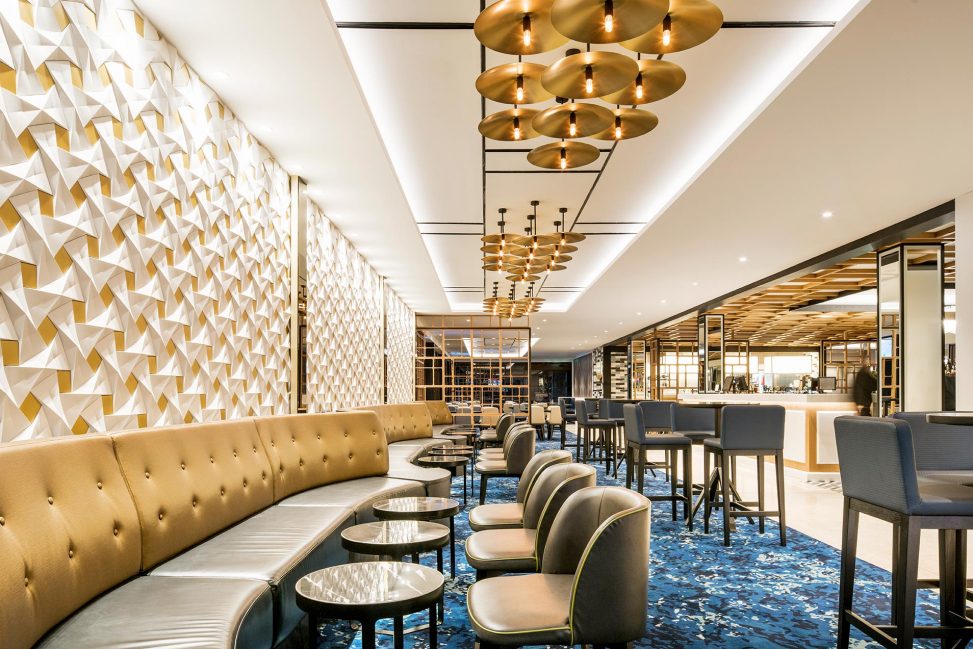New trends
As the big clubs in NSW such as Revesby Worker’s Club move into shopping mall development, you might be wondering why they are expanding into retail, leisure and healthcare.
And why are Harbord Diggers developing an “intergenerational community hub” with upscale retirement living and $1.4 million apartments on Sydney’s North Shore?
How come there are reports of clubs introducing fine dining and premium menus?
And in RED’s hospitality design practice we have seen a move to luxury and quality finishes as clubs strive to compete with the top end of town.
What is going on in the clubs industry that used to be the home of pies, parmas and pokies?
Changing customers
The answer is that their markets are changing.
Australia’s aging baby boomers do spend big as a rule, and they have much higher expectations of quality and customer service.
Seniors spend more time eating out, travelling, gambling, relaxing and exercising than ever before, but their economic outlook is a lot less certain with changes in superannuation and the affordability of their retirement lifestyles; their average spend starts reducing from the age of 70 – so clubs cannot rely on this segment as they have in the past.
Most clubs have targeted families with a fair degree of success, but Millennials have yet to discover clubs as a destination. How do clubs attract younger members who are used to spending most of their time online?
New competitors
The competition is changing too.
The growth of new casinos continues in Sydney and Brisbane and the growth in online gaming and mobile betting continues unabated.
Casual dining is a growth segment in restaurants that is attracting customers away from clubs – just check out your local Schnitz, Nando’s or Grill’d outlet to see evidence of this trend.
There are nearly 30,000 fast food outlets, 20,000 cafes and 22,000 restaurants all over Australia – all competing with around 6,400 clubs for the dining dollar.
(Eating Out in Australia 2017 – A Special Report of Hospitality Magazine)
Will clubs survive?
The financial viability of clubs is also an issue.
A recent Club Census showed that 48% of larger clubs ( EGM revenue of $1m or more annually), were solid financial performers or flourishing.
The same cannot be said of 57% of smaller clubs ( under $1m per annum of EGM revenue), were showing signs of distress or serious distress.
The signs are clear – the club industry is fighting back.
Clubs are drawing customers from shopping malls, attracting them away from fast food restaurants and cinemas – developing bigger and better destinations to keep customers happier, healthier and more fulfilled.
Clubs are making better use of their available land to develop new and more profitable uses for their sites such as retail, residential, healthcare, hotels and retirement living.
Trends in club design
Architects and designers are taking note of these changing trends.
RED DESIGN GROUP is one of the design firms that has brought its creative skills and experience in retail and hospitality design to a number of larger clubs projects in NSW and Queensland.
For too long club design has been bland and “cookie-cutter” – driven by large builders who pushed the Design-Construct model to reduce costs, but did little to improve the customer experience for club members, and even less for the long term survival and viability of clubs.
RED has a different view.
With a number of successful club projects under their belt, such as the Tradies Club in Sutherland, Earlwood Bardwell RSL, Maroochydore RSL and currently Petersham RSL, RED is one of the newer players in town – bringing a blend of architecture, interior and brand design.
A mix of retail and hospitality design
RED’s retail design pedigree is impressive, and their hospitality and gaming projects for the likes of Crown, Star, ALH and Tabcorp, as well as a number of independent pub and clubs clients, are attracting attention.
RED have architects, interior designers and brand designers – and are one of the first agencies to embrace digital technology into the design of the physical customer experience.
They also have a strong focus on the commercial side of design – which is refreshing.
Growth in revenue, increasing membership, reduced operating costs and better ROI are as important to RED as creating a beautiful design and a great customer experience.
Have a look at our Earlwood Bardwell Park RSL project to see how the club embraced a touch of luxury when RED redesigned their venue in suburban Sydney.
If we can help your club give us a call.


Leave a Reply